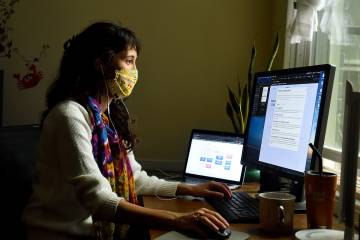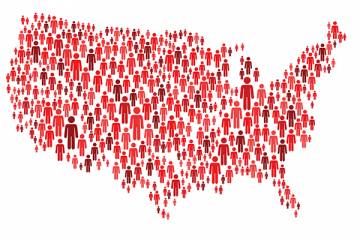- Name
- Robin Scullin
- rsculli@jhu.edu
- Name
- Barbara Benham
- bbenham1@jhu.edu
A new Coursera class developed by the Johns Hopkins Bloomberg School of Public Health is now available to train contact tracers on the principles of the public health strategy many consider critical for slowing the spread of COVID-19.
The free six-hour course is open to anyone, but taking and passing it will be a requirement for thousands of contact tracers being hired by the state of New York to fight the pandemic. Within hours of its release Monday, more than 400 people had already registered for the class, according to Joshua Sharfstein, a vice dean at the Bloomberg School.
A long-used public health tool, contact tracing aims to break the chain of transmission of infectious diseases. The new Coursera class, "COVID-19 Contact Tracing," teaches the basics of interviewing people diagnosed with the virus, identifying their close contacts who might have been exposed, and providing them guidance for self-quarantine for two weeks.
"Even if you stop one or two new infections, you're preventing many new cases down the line," Johns Hopkins infectious disease epidemiologist Emily Gurley, the lead instructor of the course, said during a press briefing today. Gurley, who has a background in outbreak response, developed the curriculum with colleagues from the Bloomberg School, including Tolbert Nyenswah, who served as incident commander in response to the Ebola outbreak in Liberia.
The course is part of ambitious push for contact tracing backed by New York Gov. Andrew M. Cuomo and Michael R. Bloomberg, founder of Bloomberg Philanthropies and former three-term mayor of New York City, who recently announced plans to develop a large-scale statewide program in New York. The program will include a baseline of 30 contact tracers for every 100,000 residents in the state and is expected to have 6,400 to 17,000 tracers statewide depending on the projected number of cases.
"Contact tracing allows us to communicate with people infected with COVID-19, identify those who may have been exposed, and provide all of them with guidance to limit the spread of the disease," Bloomberg said in a release. "This new training course, which we're making available online for free, will teach contact tracers how to do this work effectively—and help cities and states across the nation undertake these critical efforts."
Across the nation, an estimated workforce of 100,000 could be required to help limit the spread of COVID-19 and safely reopen the economy, according to a recent report by the Johns Hopkins Center for Health Security.
"Other communities may similarly adopt this particular course, or maybe they'll give students a few options," Sharfstein said during the briefing. "Anyone in the country now can take this course and get a certificate to demonstrate that they … understand these key aspects of contact tracing."
The contact tracing course is divided into five sections or "modules," covering:
- Basic information on the virus and COVID-19, including symptoms of infection and how the virus is transmitted
- Fundamentals of contact tracing, such as how to define a case, identify their contacts, and calculate how long a contact should isolate;
- Steps involved in investigating cases and tracing their contacts, including simulated scenes performed by professional actors who illustrate potential interactions that tracers may experience with infected individuals and their contacts
- Ethics of contact tracing, including balancing privacy and public health considerations, and examples of basic technology tools that can facilitate contact tracing, such as using text messaging for check-ins and reminders;
- Skills for effective communications in the tracing process, such as what it means to be an "active listener" and how to deal with common challenges that arise when investigating cases.
The class includes simulations of contact tracing calls to give trainees a sense of the complex personal dynamics at play with the strategy, including in some cases a reluctance to self-quarantine for two weeks.
"It's a big ask," Gurley said. "Contact is something that's led by the health department but ultimately everyone has to participate to make this work and try to prevent spread."
Added Bloomberg School Dean Ellen J. MacKenzie: "The Bloomberg School of Public Health has been at the forefront of the fight against COVID-19 since the beginning, helping leaders and the public understand and respond to this pandemic with the best available science and evidence. Massive contact tracing is a critical component of our recovery. We are thrilled to bring our deep expertise on this important public health practice, as well as our experience in industry-leading online teaching, to the training and curriculum for this groundbreaking effort."
Posted in Health
Tagged coronavirus, covid-19











